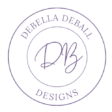Cold Outreach vs. Warm Leads: Which Strategy Fills Your Calendar Faster?

Imagine sitting down at your desk, glancing at your calendar only to find it sparse and uninspired. Now, picture a steady influx of meetings with potential clients—your calendar bursting at the seams with opportunities. This is the dream many business owners and sales professionals strive for, and it hinges on one critical factor: mastering lead generation. Yet, the road can be tricky, especially when it comes to choosing between cold outreach and warm leads. Each strategy offers distinct advantages and challenges, making it essential to explore their nuances. In this blog, we dive deep into these two lead generation methods, examining their strengths and weaknesses to help you determine which approach can best supercharge your client acquisition efforts and fill your calendar faster.
Understanding Cold Outreach
Cold outreach involves contacting potential clients with whom your business has had no prior interaction. This approach is often broad-reaching and can introduce your services to a wide audience. It requires strategies like cold calling, emailing, or social media messaging, and effective communication and persistence are key to success.
One strategic advantage of cold outreach is the ability to target vast, unexplored markets quickly. The goal is to generate a large list of potential contacts, opening channels to new sectors and demographics. However, the conversion process depends highly on your ability to craft messages that resonate and continue engagement through personalized communication. Personalization in outreach, as discussed here, often results in better engagement and a stronger business footprint.
However, one must carefully design their cold outreach approach to avoid the pitfalls of impersonal and generic messaging. While it offers vast outreach capabilities, the challenge remains in creating content that is compelling enough to hold the attention of those who have never interacted with your brand before. Personalization and careful targeting can distinguish your efforts from the spam that inundates many inboxes daily, turning cold contacts into warm relationships over time.
The Strengths of Warm Leads
Warm leads stem from previous interactions or established interest in your products or services. This strategy often yields higher conversion rates as the prospects already exhibit an inclination toward engaging with your business. Leveraging referrals, nurturing existing relationships, or using CRM systems can enhance this method.
Nurturing warm leads often involves multiple stages of engagement, transitioning from initial interest to a deeper, committed relationship. Employing content marketing strategies, social proof, and referral programs can effectively nurture these leads. These tactics not only foster trust but also expand the network of warm leads through advocacy and word-of-mouth, leveraging the loyalty of satisfied clients to bring in new prospects.
An inherent advantage with warm leads is the reduced resistance during conversion. Prospects who have previously engaged with your brand are more likely to progress through the sales funnel more quickly as they’ve already overcome initial trust barriers. This makes warm leads more cost-effective over time, requiring fewer resources to close compared to the efforts needed in initiating cold outreach successfully.
Engaging with warm leads can significantly improve client retention rates. By consistently providing value, solving pain points, and maintaining communication, businesses can cultivate a loyal client base that not only returns for repeat business but also provides valuable feedback and referrals. This cycle of engagement and satisfaction forms the bedrock of a successful long-term customer relationship management strategy.
Comparing Conversion Rates
When weighing cold outreach against warm leads, understanding conversion rates is crucial. Warm leads typically convert at a higher rate due to their existing interest or trust in your brand. In contrast, cold outreach requires more effort to build rapport but can be worthwhile by generating a substantial volume of potential clients.
The conversion efficiency of warm leads can be attributed to their established familiarity with your offerings. Prospects already in the loop are more likely to respond favorably to follow-ups and additional insights, enhancing overall conversion metrics. Implementing a strategic touchpoint plan, which includes periodic check-ins and content sharing, can turn initial interest into strong business relationships. Understanding buyer personas and addressing specific needs and challenges they face can significantly speed up this process.
On the other hand, cold outreach, although facing lower initial conversion rates, has the potential to unlock new markets. Its widespread approach is conducive to high-volume prospecting, especially when employing automated tools for outreach management. By refining targeting criteria and using data-driven insights, businesses can enhance the quality of initial contacts, subsequently improving conversion rates gradually through consistent and targeted follow-up strategies.
It is essential to assess not only the quantity but also the quality of conversions when comparing these strategies. High conversion rates from warm lead sources often result in better-sustained partnerships and customer relations, whereas cold lead conversions, although lower in rate, might bring diverse opportunities by reaching unexplored demographics and industries.
Cost Considerations
Financial investment differs significantly between cold outreach and warm leads. Cold outreach might incur costs related to advertising, data acquisition, or tools for mass communication. Meanwhile, warm leads generally entail investments in nurturing relationships and creating value-driven content that entices potential clients.
Cold outreach campaigns frequently require a substantial upfront investment in data gathering and advertising to capture attention among potential clients. The expenses tied to purchasing lead lists, investing in outreach software, and automating processes can add up, demanding careful budget allocation to ensure ROI does not drop below expected levels. Structuring cost-effective outreach plans can mitigate these financial obstacles, minimizing unnecessary expenditure while maximizing reach.
Conversely, the focus with warm leads is often on the investment of time and effort rather than money. Hosting webinars, writing informative blog posts, or distributing newsletters effectively engages warm leads without significant monetary costs. Utilizing in-house resources for content creation and nurturing relationships through strategic, organized communication can offer substantial savings while fostering lasting client partnerships. These efforts may seem labor-intensive initially, but they offer substantial cost benefits over time as client loyalty and referrals increase.
Time Efficiency in Filling Your Calendar
The speed at which each strategy fills your calendar also varies. Cold outreach can rapidly reach a large audience but often requires time to generate engagements. Warm leads, although potentially slower to accumulate, involve shorter timeframes for conversion due to the pre-existing interest.
Cold outreach’s strength lies in its ability to put a business in front of a large number of potential clients quickly. However, this initial interaction often demands time-consuming follow-ups and nurturing to see tangible results. Setting realistic timelines and building in follow-up touchpoints can streamline this process and improve overall time efficiency by ensuring that interactions are focused and sequential.
In contrast, warm leads offer somewhat less uncertainty in engagement timelines. With interest already established, the conversion process requires significantly less time due to the trust factor already being in place. Investing time upfront to qualify and selectively engage with these leads can lead to quicker conversions and optimize time efficiency for generating sales. Engaging warm leads through timely, relevant email marketing can ensure consistent conversions and client engagement.
Striking the Perfect Balance
A strategic blend of both approaches can maximize results. Employing cold outreach to expand your reach while simultaneously fostering warm leads ensures a steady influx of prospective clients. This balanced tactic leverages the strengths of each method, providing both scalability and higher conversion potential.
Integrating these strategies requires a keen understanding of your target market and the decision-making process. Companies that harness the strength of both methodologies through integrated marketing often find better stability in lead flow, offsetting the slower conversion times of cold outreach with the higher conversion rates of warm leads. The key to this balance is constant evaluation and adaptation, ensuring that each approach is fine-tuned to your evolving market.
Furthermore, employing a hybrid strategy also allows businesses to effectively manage risk. While relying solely on warm leads could limit your reach, neglecting them might undermine existing relationships. Harnessing both methods offers scalability, a broader audience base through cold outreach, and a solid conversion foundation through warm engagement. This duality not only fills your calendar but ensures that it is filled with quality prospects.
Ultimately, finding a perfect balance between cold outreach and warm leads enables businesses to remain agile, resilient, and responsive to market changes. This dynamic approach provides businesses with the flexibility to scale operations, tap into new markets, and build enduring client relationships. By striking this balance, businesses can confidently build a pipeline that consistently fuels growth and strengthens their market position.
Finding Balance in Lead Generation Strategies
Both cold outreach and warm leads offer unique advantages when it comes to filling your calendar with potential clients. While cold outreach allows for a broader reach, warm leads provide higher conversion rates due to pre-established interest or relationships. The best approach often depends on your business model, industry, and resources. Ultimately, a balanced strategy that incorporates elements of both cold and warm lead generation may yield the most effective results, optimizing your efforts in securing clients.






